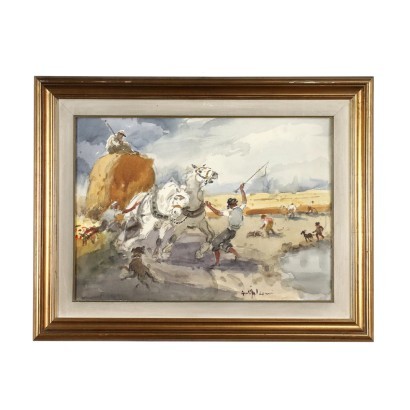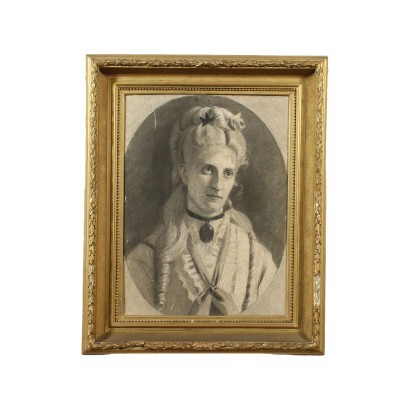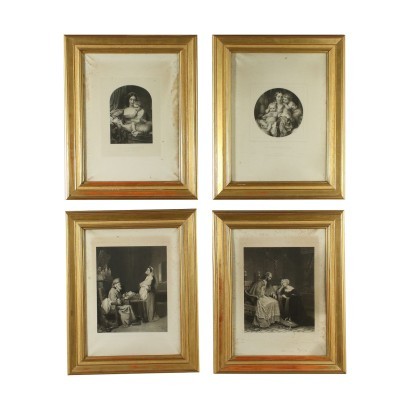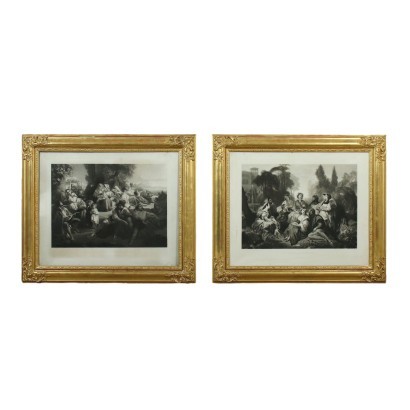Giulio Falzoni - The work in Campi
Features
Artist: Giulio Falzoni (1900-1978)
Artwork title: Il lavoro nei campi
Age: 20th Century / 1901 - 2000
Subject: Scene with Figures
Origin: Italy
Artistic technique: Painting
Technical specification: Watercolor
Description : Il lavoro nei campi
Watercolor on cardboard. Signed lower right. Further signature and title on the back; There is also a collector's stamp. Originally from the province of Mantua, Giulio Falzoni trained at the Academy of Fine Arts in Florence, where he immediately distinguished himself for the use of the watercolor technique, a technique in which he then specialized in London. His production was strongly linked to his origins, with numerous rural and bucolic views of the Mantuan countryside, but he was also a painter of the old Milan, of which he portrayed corners and small glimpses of the historic center, as well as of London where he studied. The painting presented is part of the most typical production of Falzoni, a watercolor that offers a moment of peasant life. It is presented in a frame.
Product Condition:
Product in good condition, with small signs of wear.
Frame Size (cm):
Height: 70
Width: 90
Depth: 6
Artwork dimensions (cm):
Height: 50
Width: 70
Additional Information
Artist: Giulio Falzoni (1900-1978)
Giulio Falzoni was born in 1990 in Marmirolo, in the province of Mantua, but lived for many years in Florence and later in Milan, a city for which he painted many views. In 1915 he began studying drawing in Mantua and despite his young age, he took part in the First World War for a short period of time. Even in those tragic circumstances he continued to draw some images of life in the trenches. In 1928 he attended the Academy of Fine Arts in Florence, where he began to distinguish himself for his use of the watercolor technique. During his stay in Florence he attended the studios of Ludovico Tommasi and Plinio Novellini, from whom he began his exhibition career thanks also to the interest of a representative of the early 20th century Neapolitan art, Vincenzo Irolli, who invited him to paint in his studio. At the end of the 1940s he specialized at the Royal Water Color Society in London, where he represented evocative views of the city. From the 70s onwards he dedicated himself to multimedia experiments that combined his two great passions: painting and classical music. In these experiments he illustrated various lyrical and symphonic works with his watercolors. During his career he participated in several art exhibitions, such as in Mantua, Naples, Padua, Florence and in many other cities in Switzerland, France and England. Falzoni is considered a leading representative of the figurative school of the 20th century who practiced various techniques, such as oil on canvas, murals, ink and some interesting multimedia experiments ante litteram, but stood out in particular for his mastery of watercolor, of which he was an undisputed master. Among his favorite subjects, the views of many cities, first of all Milan, and horses, which throughout his pictorial life entered his paintings, alone or as part of his many views of cities around the world. He was also a talented violinist. Giulio Falzoni died in 1979 in Milan.
Age: 20th Century / 1901 - 2000
20th Century / 1901 - 2000
Subject: Scene with Figures
Artistic technique: Painting
La pittura è l'arte che consiste nell'applicare dei pigmenti a un supporto come la carta, la tela, la seta, la ceramica, il legno, il vetro o un muro. Essendo i pigmenti essenzialmente solidi, è necessario utilizzare un legante, che li porti a uno stadio liquido, più fluido o più denso, e un collante, che permetta l'adesione duratura al supporto. Chi dipinge è detto pittore o pittrice. Il risultato è un'immagine che, a seconda delle intenzioni dell'autore, esprime la sua percezione del mondo o una libera associazione di forme o un qualsiasi altro significato, a seconda della sua creatività, del suo gusto estetico e di quello della società di cui fa parte.
Technical specification: Watercolor
The watercolor or the watercolor is a painting technique that involves the use of pigments, finely ground and mixed with a binder, diluted in the water. The watercolor is a technique that is popular for its speed and for the easy portability of the materials, which have made it the technique of the excellence of those who paints and travelling in the open air. The support used for this technique is the paper that is preferably used with a high percentage of pure cotton as the long fiber of this plant do not change in contact with water. The paper that you buy commercially is measured in grams meter (weight of a sheet of 1 square meter). The preparation of the watercolor painting can be done according to three separate technical: 1) high level of overlapping, which, in addition to giving strength and tone to the same color, give the preparatory drawing, which is usually performed in light pencil, the necessary depth pictorial useful to the representation of the volumes, the shadows and the light; 2) painting wet-on-wet, i.e. the preparation of a coloured pigment to be made on the sheet of wet paper in the above so that the colors from spreading and flowing and giving you a look suffused the painting; 3)painting wet-on-dry, in which the pigment is laid after being dissolved with a sufficient amount of water to slide on the dry sheet. 


























